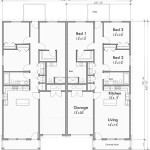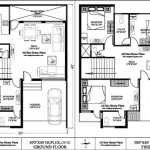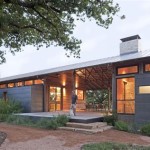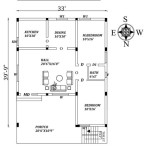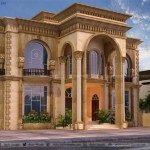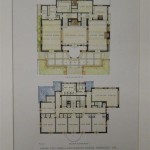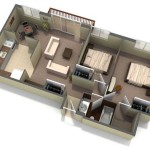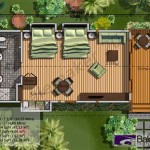Floor Plan: Ranch Style House
The ranch-style house, a quintessential symbol of suburban living, remains a popular choice for homeowners due to its single-story layout, open floor plans, and ease of accessibility. Characterized by their long, low profile and connection to the outdoors, ranch homes offer a practical and versatile living space adaptable to various lifestyles and needs. Understanding the common features and variations within ranch house floor plans can assist prospective homeowners in making informed decisions.
The classic ranch floor plan typically features a simple rectangular or L-shaped design. The main living areas, including the living room, dining area, and kitchen, are often arranged in an open concept layout, promoting a sense of spaciousness and facilitating interaction among family members. Bedrooms are usually clustered on one side of the house, providing a degree of privacy from the common areas. Attached garages are a standard feature, often extending from the front or side of the house, contributing to the ranch's characteristic low-slung appearance.
Variations exist within the ranch style, each offering distinct advantages. The California ranch, for example, emphasizes indoor-outdoor living, often incorporating patios, courtyards, and large windows to maximize natural light and connect the home to its surroundings. The split-level ranch introduces a staggered floor plan, typically with the living areas on one level, bedrooms on another, and a basement level below. This design creates more defined spaces while maintaining the ranch's overall horizontal emphasis. The raised ranch elevates the main living area above ground level, often with a finished basement or garage underneath, providing additional living space and flexibility.
Key considerations for ranch house floor plans include the size and layout of the living areas. Open concept designs promote social interaction and create a sense of spaciousness, but some individuals may prefer more defined spaces for specific activities. The number and placement of bedrooms should align with the needs of the household, considering factors such as privacy and accessibility. Bathroom placement and accessibility are crucial, particularly for multi-generational households or individuals with mobility limitations.
Storage space is another significant consideration in ranch homes. Closets, pantries, and built-in storage solutions can maximize functionality and minimize clutter. The presence and location of a laundry room should also be assessed based on individual preferences and lifestyle. Outdoor living spaces, such as patios, decks, and porches, extend the living area and provide opportunities for recreation and relaxation. Their integration into the overall floor plan is essential for maximizing enjoyment and functionality.
Modern ranch house floor plans often incorporate updated features to meet contemporary needs and preferences. Larger kitchens with islands and breakfast bars are common, reflecting the increasing importance of the kitchen as a social hub. Master suites with walk-in closets and en-suite bathrooms are frequently included, offering homeowners a private retreat. Energy efficiency is also a growing concern, with many modern ranch designs incorporating features such as improved insulation, energy-efficient windows, and solar panels.
Adaptability is a significant advantage of ranch-style homes. Their single-story layout makes them easily adaptable for aging in place, as they eliminate the need to navigate stairs. Remodeling and expanding ranch homes is often relatively straightforward, allowing homeowners to customize their living space to meet evolving needs. Additions can be added to the sides or rear of the house, and basements can be finished to create additional living areas.
Choosing the right ranch house floor plan requires careful consideration of individual needs and preferences. Factors such as lifestyle, family size, and budget play a significant role in determining the optimal layout and features. Consulting with architects and builders can provide valuable insights and ensure that the chosen floor plan meets specific requirements and maximizes the potential of the ranch-style home.
Analyzing existing ranch house floor plans and visiting model homes can offer practical inspiration and a better understanding of the various layout options. Online resources and architectural publications provide a wealth of information on ranch-style homes, showcasing different designs and highlighting key features. By thoroughly researching and considering various options, prospective homeowners can select a ranch house floor plan that perfectly aligns with their lifestyle and creates a comfortable and functional living environment.
Ranch house floor plans offer a blend of practicality, adaptability, and classic design. Their enduring popularity underscores their timeless appeal and ability to cater to diverse lifestyles. By understanding the key features and variations within ranch house designs, individuals can make informed decisions and create a home that truly reflects their individual needs and preferences.

4 Bedroom Classic Ranch House Plan With Covered Porch

Trending Ranch Style House Plans With Open Floor Blog Eplans Com

Ranch Floor Plan Main 70 1461 Style House Plans Craftsman Homes

Buy Ranch Style 2 Bedroom House Plan 943 Sq Feet Or 87 6 M2 In

4 Bedroom Ranch House Plan

Ranch Style House Plan 3 Beds 2 Baths 984 Sq Ft 312 542 Houseplans Com

Ranch Floor Plan Main 70 1047 Home Plans Style

Trending Ranch Style House Plans With Open Floor Blog Eplans Com

Ranch Style House Plan Split Level Home Floor Angle Text Png Pngegg

Ranch Style House Plan 5 Beds Baths 5884 Sq Ft 48 433 Houseplans Com

